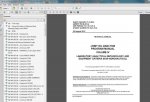Copper and iron levels are always present in transmission fluid as wear takes place. As these elements accumulate, that is what prompts fluid and filter changes. You see a good bit of initial wear in the fluids during break in period. With many of those trucks having essentially no miles on them, the elevated levels really don't say much about anything. Overall, I think you just have to choose your truck based on every factor, not just one particular factor. If the mileage, hours and overall appearance tell you it seems in good order, the mechanicals are quite likely fine. With no mileage, the fact that these trucks have been sitting so much during their lifespan is going to be more detrimental than anything. Frankly, I say you buy a truck that runs and overall checks out right, and roll the dice. Like someone else said, slightly rough body, but runs good during the expection...good enough.


